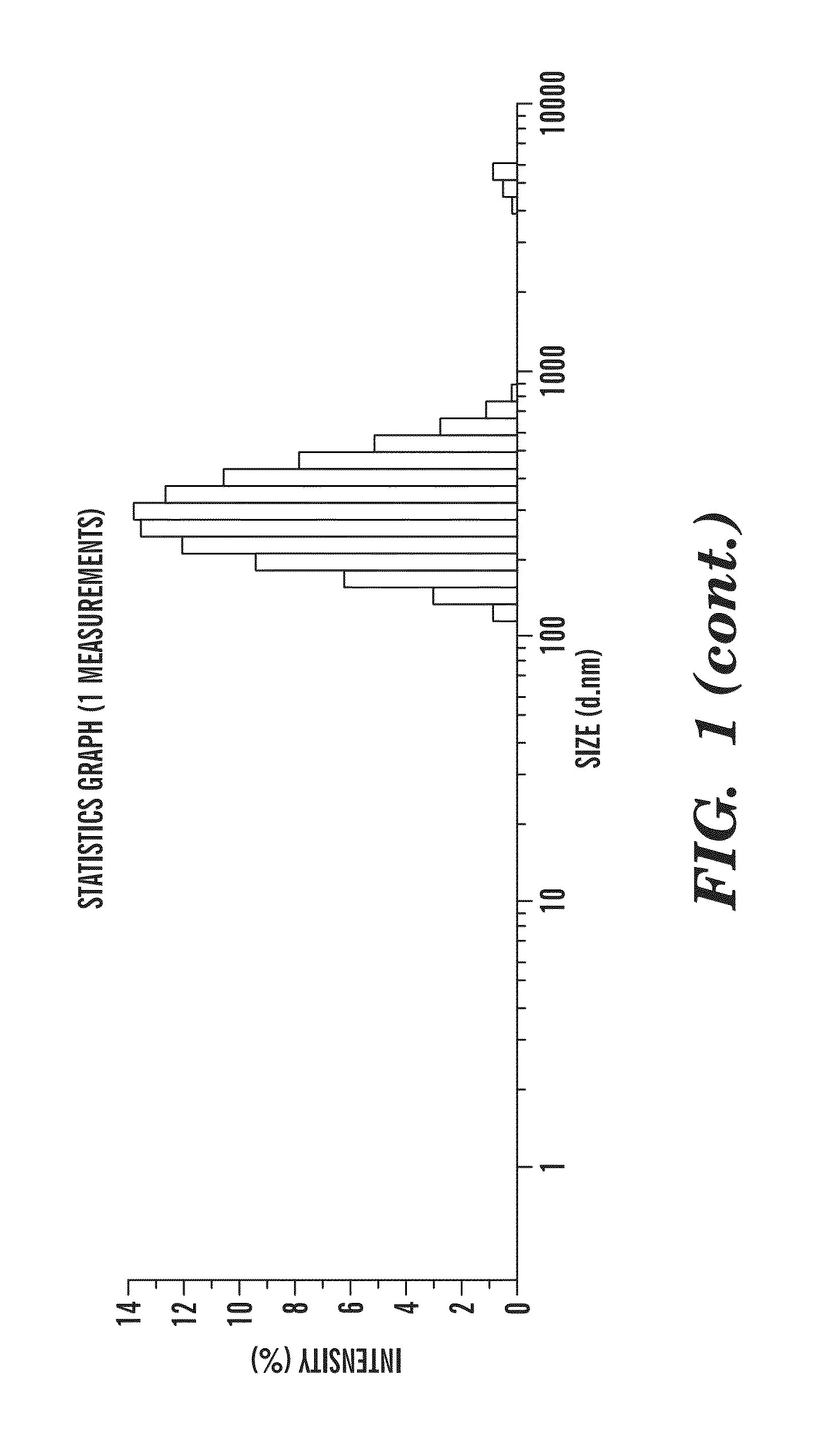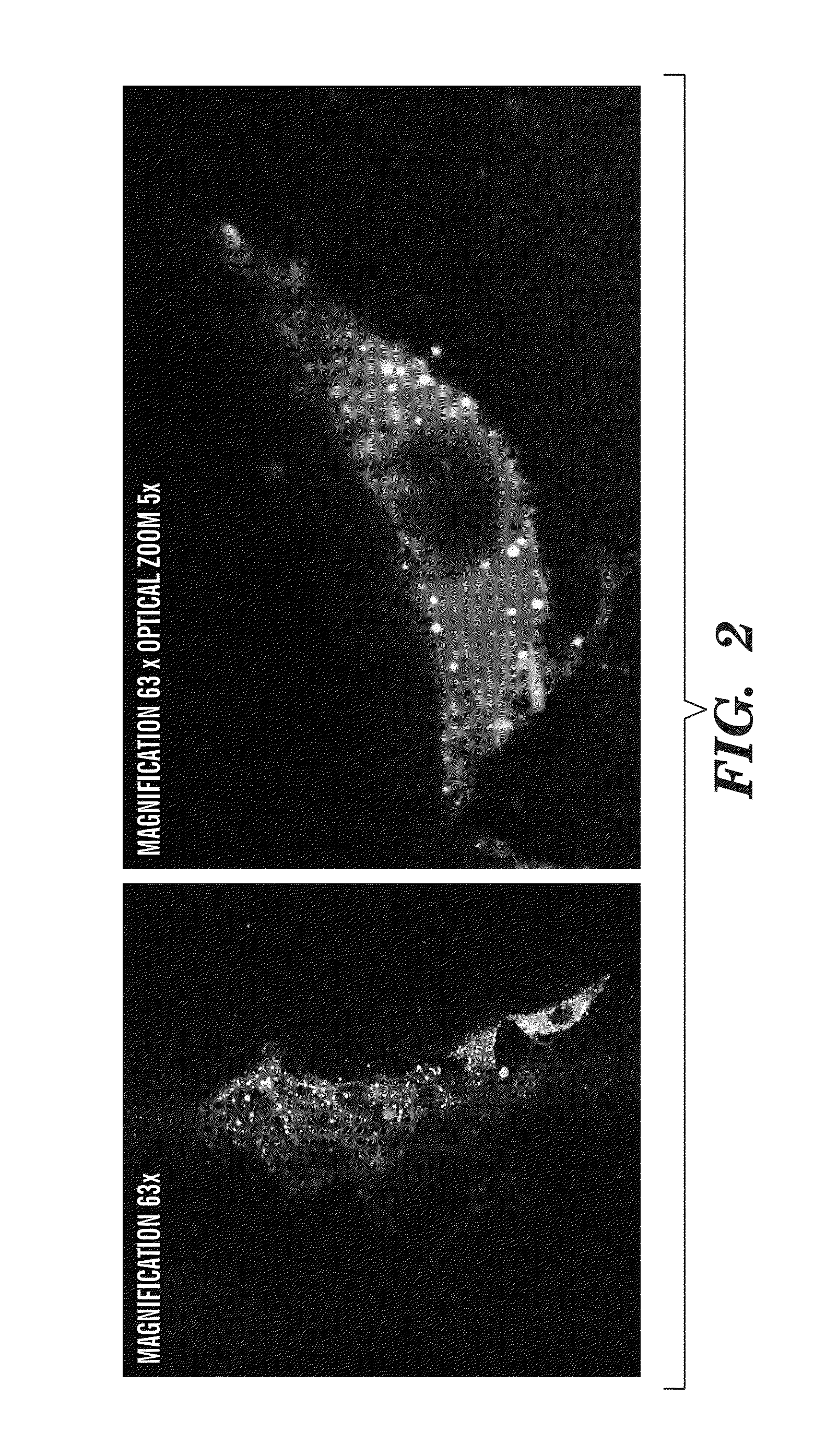Nano-targeted delivery of protease, polymerase inhibitors with or without immune modulators in the treatment of hepatitis c
a technology of hepatitis c and polymerase inhibitors, applied in the direction of biocide, animal husbandry, carbohydrate active ingredients, etc., can solve the problems of high cost of ifn combination therapy, low efficiency, and only around 50% success ra
- Summary
- Abstract
- Description
- Claims
- Application Information
AI Technical Summary
Benefits of technology
Problems solved by technology
Method used
Image
Examples
example 1
Qualitative In Vitro Anti-HCV Screening
[0048]1—Detection of the Effect of the Prepared Compounds on Cancer Cell Line:
[0049]HepG2 cells were washed twice in RPMI1640 (Cambrex) media supplemented with 2000 μM L-glutamine (Cambrex) and 2504 HEPES buffer; N-[2-hydroxyethyl]piperazine-N′-[2-ethanesulphonic acid] (Cambrex) and were suspended at 2×105 cells ml−1 in RPMI culture media (RPMI supplemented media, 10% fetal bovine serum (FBS); GIBCO-BRL). The cells were left to adhere on the polystyrene 6-well plates for 24 hours in 37° C., 5% CO2, 95% humidity incubator. After 24 hr. the cells were washed twice from debris and dead cells by using RPMI supplemented media. Different concentrations (100, 50, 20, 10 or 5 μg / ml) from each prepared compound were added in 6-well plates. Positive and negative control cultures were included. Cultures were incubated for 72 hours in 37° C., 5% CO2, 95% humidity. For examining the cell cycle of control and treated cells, the adherent cells were detached f...
example 2
[0050]Qualitative in Vitro anti-HCV screening: Prepared compounds in the present study were investigated for its In Vitro action as anti-HCV using the hepatocellular carcinoma HepG2 cell line infected with the hepatitis-C virus. During the last few years, a number of cell culture systems showed to have the ability to harbor and support reliable and efficient progression of this virus. Among several human hepatocyte cell lines analyzed, the hepatocellular carcinoma HepG2 cell line was found to be most susceptible to the HCV infection. On the other hand, monitoring of the HCV viremia pre- and post-antiviral therapy through the detection of viral (+) and / or (−) RNA strands by the use of qualitative reverse transcription-polymerase chain reaction (RT-PCR) has become the most frequently-used, reliable and sensitive technique. Recently, it has been reported that the detection of the (−) strand HCV-RNA using the RT-PCR is a very important tool for understanding the life cycle of the HCV an...
example 3
[0053]Flow cytometry analysis of intracellular staining of HCV core antigen in infected HepG2 cells: The intracellular staining of HCV core antigen in HCV infected HepG2 cells were quantified before and after incubation with the different concentrations of the test compounds by using a fluorescence activated cell sorting (FACS) based assay. Intracellular staining labeling was performed by direct immunofluorescence. HepG2 cells (collected after addition of trypsin) were centrifuged and supernatants were removed. Cell pellets were washed 4 times with PBS. For intracellular staining, cells were incubated with 4% paraformaldehyde for 10 min and 0.1% Triton X-100 in Tris buffer (pH 7.4) for 6 min. After washed with PBS, cells were incubated with FITC-labeled F (ab)2 portion of HCV core antibody (at 1:2000 dilutions or according to previous standardization) for 30 min at 4° C. Cells were washed with PBS containing 1% normal goat serum and suspended in 500 μl and were analyzed by flow cyto...
PUM
| Property | Measurement | Unit |
|---|---|---|
| molecular weight | aaaaa | aaaaa |
| concentrations | aaaaa | aaaaa |
| concentrations | aaaaa | aaaaa |
Abstract
Description
Claims
Application Information
 Login to View More
Login to View More - R&D
- Intellectual Property
- Life Sciences
- Materials
- Tech Scout
- Unparalleled Data Quality
- Higher Quality Content
- 60% Fewer Hallucinations
Browse by: Latest US Patents, China's latest patents, Technical Efficacy Thesaurus, Application Domain, Technology Topic, Popular Technical Reports.
© 2025 PatSnap. All rights reserved.Legal|Privacy policy|Modern Slavery Act Transparency Statement|Sitemap|About US| Contact US: help@patsnap.com



